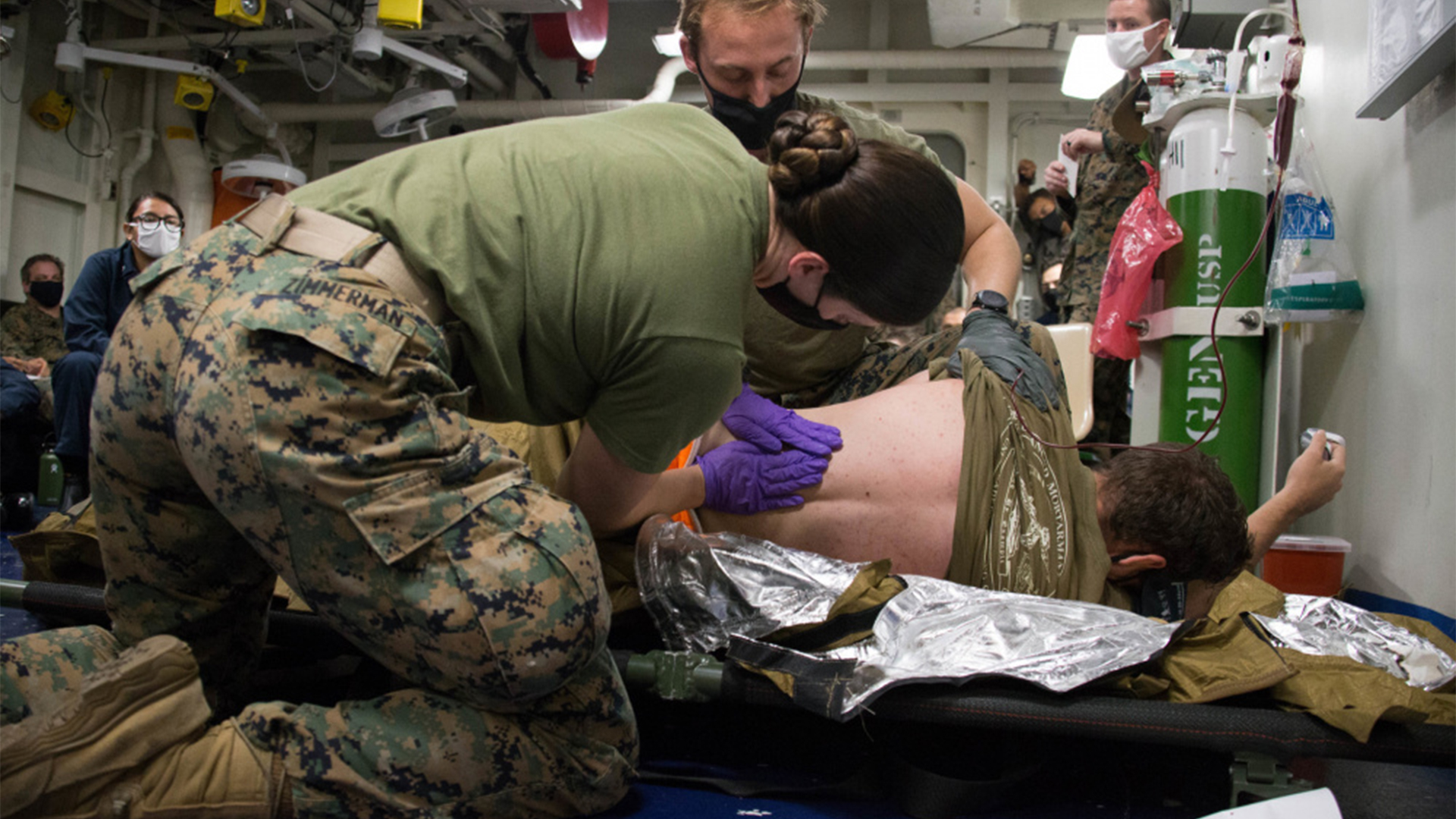

Editor’s note: this story has been updated to include more details about the history of direct blood transfusion.
The Navy is churning out corpsmen who are trained in an effective blood transfusion technique, one where corpsmen resupply an injured service member with blood drawn straight out of someone else’s veins while they’re still on the battlefield.
The new technique, called “Valkyrie” in the Navy, was adopted from the Army’s Ranger O Low Titer Whole Blood Program, which saved a Ranger’s life during a firefight in Afghanistan in early 2020.
Instead of having to wait for a medevac, which takes 36 minutes on average, a critically-injured service member can now receive fresh blood from a buddy right on the battlefield. The technique saves precious minutes in the race against time to stabilize the patient.
“There have been studies shown that those who have not received pre-hospital blood within the 36 minutes have a higher mortality rate,” said Hospital Corpsman 2nd Class Steven Hill, with Combat Logistics Battalion 15, 15th Marine Expeditionary Unit, in a recent press release about Valkyrie.
The technique is spreading like wildfire, especially as the military considers the prospect of conventional warfare, where, due to contested airspace, service members may not have the access to the casualty evacuation flights that have saved so many lives in Iraq, Afghanistan, and elsewhere. More than 230 corpsmen and over 100 Marines have been trained to perform blood transfusions, and many more are on the way, according to the press release.
“Instructing will increase our overall ability to save lives in any environment,” said Hospital Corpsman 3rd Class Ember Zimmerman, assigned to Weapons Company, Battalion Landing Team 1/4, 15th MEU. “It is the most ideal way to treat a massive hemorrhage, and the more people who are familiar with the training, the more lives we can save.”

Direct blood transfusions are not an entirely new technique. In fact, before the development of refrigerated blood banks, it was the only way of supplying fresh whole blood into a patient, and it was used at least as far back as World War I. Army Maj. Christopher Cordova also used the technique to keep a soldier alive during the 2009 Battle of Kamdesh in Afghanistan. But despite the historically-proven efficacy of direct blood transfusion, it had not made its way into the standard training curriculum for Navy corpsmen.
“We can’t believe it’s something that hasn’t been standard operating procedures for years,” Capt. Joshua Hays, a Marine Corps spokesman, told U.S. Naval Institute News in a 2020 article about Valkyrie.
During a deployment to the Western Pacific aboard the Makin Island Amphibious Ready Group, which set sail in November, the 15th MEU has provided Valkyrie training to 35 corpsmen and 20 Marines. To practice, corpsmen and Marines draw blood from volunteer donors and then transfuse it right back into them. Now that’s efficient!
One of the advantages of Valkyrie is that it does not require storage or refrigeration. Instead, it’s stored in the toasty, 98.6-degree veins of the service member carrying it. By contrast, pre-drawn or stored whole blood must be refrigerated and warmed back up before transfusion, otherwise it could lead to lesions, the press release said. Plus, the blood and the storage equipment adds extra pounds to packs which are already laden with countless other pieces of kit.
“You need to make sure the pre-drawn or stored whole blood can be given back warmed up,” said Navy Lt. Cmdr. Michael Hight, medical surgeon with the 15th MEU. “Whereas, fresh whole blood is already in our bodies at 98.6 degrees and when we give it to someone else, it’s already warmed for them.”
Now the only challenge is to make sure none of the corpsmen or Marines are vampires.
Featured Image: Navy Hospital Corpsman 3rd Class Ember Zimmerman with Weapons Company, Battalion Landing Team 1/4, 15th Marine Expeditionary Unit, assesses a Marine during Valkyrie emergency fresh whole blood transfusion training aboard the amphibious assault ship USS Makin Island (LHD 8), Nov. 14, 2020 (Marine Corps photo by Sgt. Sarah Stegall)
